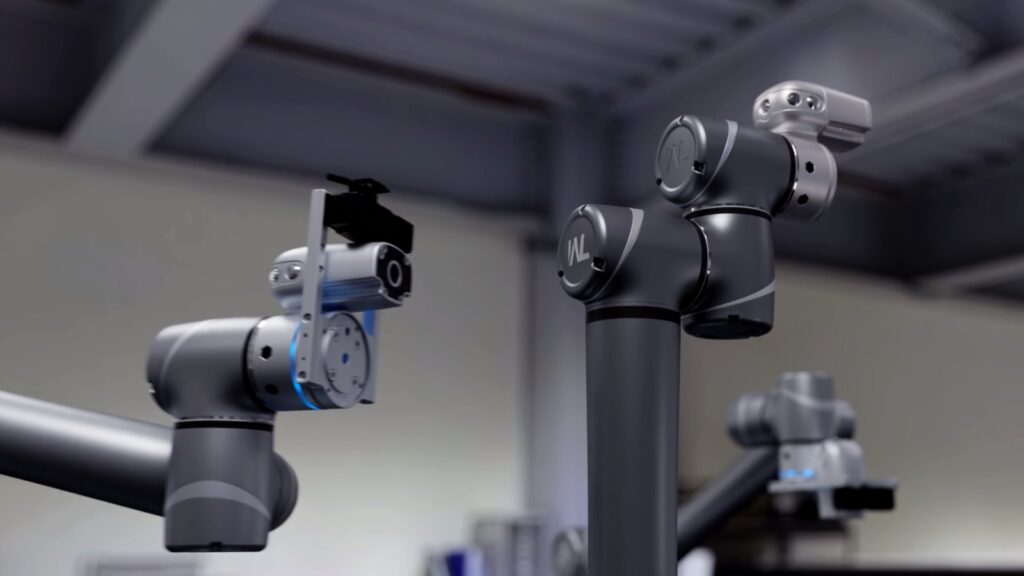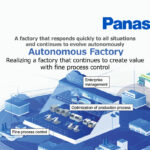ASIA ELECTRONICS INDUSTRYYOUR WINDOW TO SMART MANUFACTURING
NVIDIA Platforms Digitalize Smart Factories
NVIDIA announced electronics manufacturers worldwide are advancing their industrial digitalization efforts using a new, comprehensive reference workflow. Particularly, combining NVIDIA technologies for generative AI, 3D collaboration, simulation and autonomous machines.
Supported by an expansive partner network, the workflow helps manufacturers plan, build, operate and optimize their factories with an array of NVIDIA technologies. These include: NVIDIA Omniverse™, which connects top computer-aided design apps, as well as APIs and cutting-edge frameworks for generative AI; the NVIDIA Isaac Sim™ application for simulating and testing robots; and the NVIDIA Metropolis vision AI framework, now enabled for automated optical inspection.

In his keynote address at COMPUTEX, NVIDIA founder and CEO Jensen Huang showcased a demo of an entirely digitalized smart factory — an industry first for electronics makers.
“The world’s largest industries make physical things. Building them digitally first can save enormous costs,” said Huang. “NVIDIA makes it easy for electronics makers to build and operate virtual factories, digitalize their manufacturing and inspection workflows, and greatly improve quality and safety while reducing costly last-minute surprises and delays.”
Aims to Digitalize Smart Factories
Huang also emphasized in his keynote the role of AI in helping the US$46 trillion manufacturing sector save in the era of digital smart factory. “The world’s largest industries make physical things. Building them digitally first can save billions,” said Huang.
The keynote showed how electronics makers including Foxconn Industrial Internet, Innodisk, Pegatron, Quanta and Wistron are forging digital workflows with NVIDIA technologies to realize the vision of an entirely digital smart factory.

They’re using Omniverse and generative AI APIs to connect their design and manufacturing tools so they can build digital twins of factories. In addition, they use NVIDIA Isaac Sim for simulating and testing robots and NVIDIA Metropolis, a vision AI framework, for automated optical inspection.
An example on how manufacturing companies can benefit from NVIDIA technologies and solutions is Pegatron, which makes 300 products worldwide, including laptops and smartphones. The Taiwanese company utilizes Omniverse, Isaac Sim, and Metropolis to try out processes in a simulated environment, saving time and cost.
Another example is Foxconn Industrial Internet, which works with NVIDIA Metropolis partners to automate significant portions of its circuit-board quality-assurance inspection points.
Huang meanwhile announced during his keynote how Techman Robot, a subsidiary of Quanta, tapped NVIDIA Isaac Sim to optimize inspection on the Taiwan-based giant’s manufacturing lines. It’s essentially using simulated robots to train robots how to make better robots.

In addition, Huang announced a new platform to enable the next generation of autonomous mobile robot (AMR) fleets. Isaac AMR helps simulate, deploy and manage fleets of autonomous mobile robots.
Partners With Softbank for 5G/6G
Meanwhile, to lay the groundwork for new kinds of services, Huang announced NVIDIA is working with SoftBank to build a distributed network of data centers in Japan. Particularly, it will deliver 5G services and generative AI applications on common cloud platform.
The data centers will use NVIDIA GH200 superchips and NVIDIA BlueField-3 DPUs in modular MGX systems as well as NVIDIA Spectrum Ethernet switches. The purpose is to deliver the highly precise timing 5G protocol requires. The platform will reduce cost by increasing spectral efficiency while reducing energy consumption.
Most importantly, this will help SoftBank explore 5G and 6G applications in autonomous driving, AI factories, augmented and virtual reality, computer vision, and digital twins.




